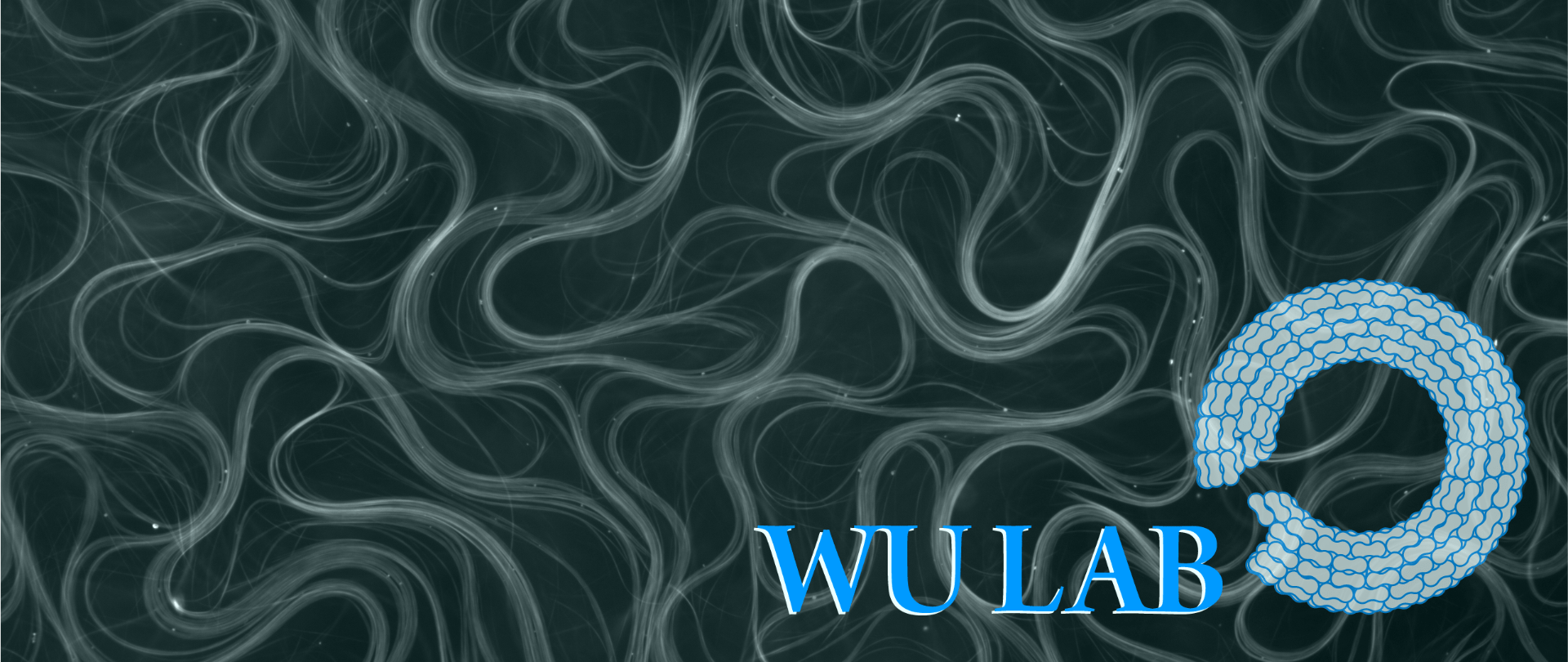
MICROTUBULE–KINESIN ACTIVE FLUID
We work on self-organization of active fluid which are composed of entities that consume fuel and propel themselves and thus can accomplish tasks beyond the limits of conventional passive fluids such as transporting cargo without external energy input. While there are various types of active fluid such as bacterial suspension and self-propelling colloidal system, we focus on kinesin-driven, microtubule-based active fluid, which hydrolyzes adenosine triphosphate to create chaotic flows at low Reynold’s number system. In this kinesin–microtubule system, we ask miscellaneous fluid-related questions such as how active fluid can create active turbulence to enhance mixing efficiency in low Reynolds number system where turbulence is suppressed and how we can regulate the chaotic flow of active fluid to a river-like coherent flow that has potential to create an active fluid-powered machine.
Our active fluid system consists of three main components:
(1) Microtubules are columnar proteins assembled from polymerization of tubulin heterodimers and play miscellaneous roles in eukaryotic cell. For examples, microtubules are the main structural component that maintains the cell shape in eukaryotic cells. Microtubules also serve as force media in celluluar dynamics such as mitosis and intracellular trasport.
(2) Kinesin motors are microtubule-associated proteins that consume adenosine triphosphate to step along microtubules while carrying cargos in cells. Kinesin plays a dynamic role in cells such as transporting neutrients and separating chromosomes.
(3) Depletanting polymers induce osmotic pressure to bundle microtubules. The bundled bundled microtubules are bridged by motor dimers that slide pairs of antiparallel microtubules, causing interfilament sliding.
The sliding dynamics within a microtubule bundle accumulate to cause the bundle to extend spontaneously. The extensile bundles break due to buckling instability. The broken bundles recombine due to the depletion force; the dynamics repeat.
The collective dynamics of these microtubules, motor dimers and depleting polymers result into a microtubule network whose structure constantly rearranges. This self-rearranging network drives the surrounding solvent (water) and creates turbulent-like flows. We study fluid dynamics of such chaotic flows with the projects including but not limited to (1) how the flows can promote micromixing in microfluidic devices, (2) how the flows are influenced by boundary geometries and boundary conditions, and (3) how the energy in the flows can be harvested to perform mechanical work.

Sponsor:
- National Science Foundation (CBET-2045621)
